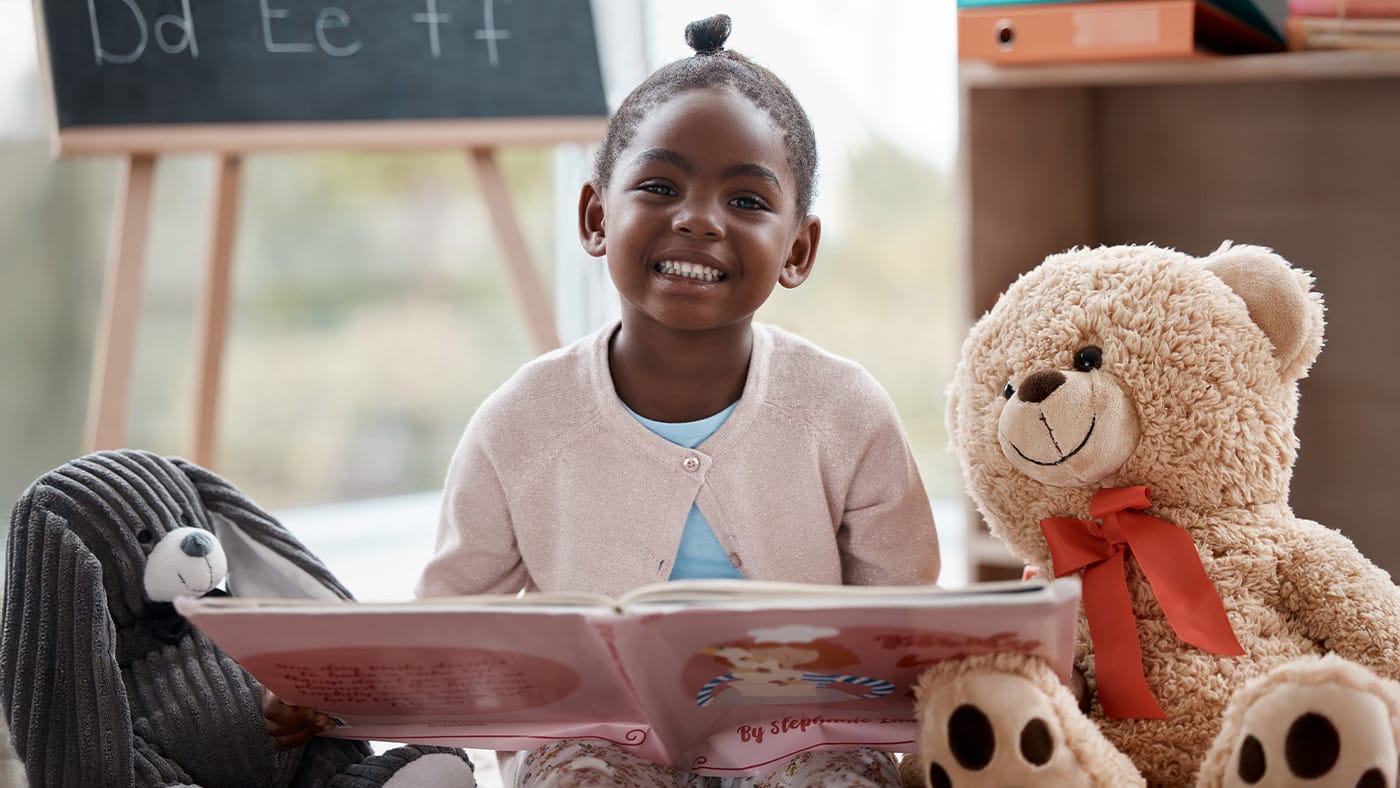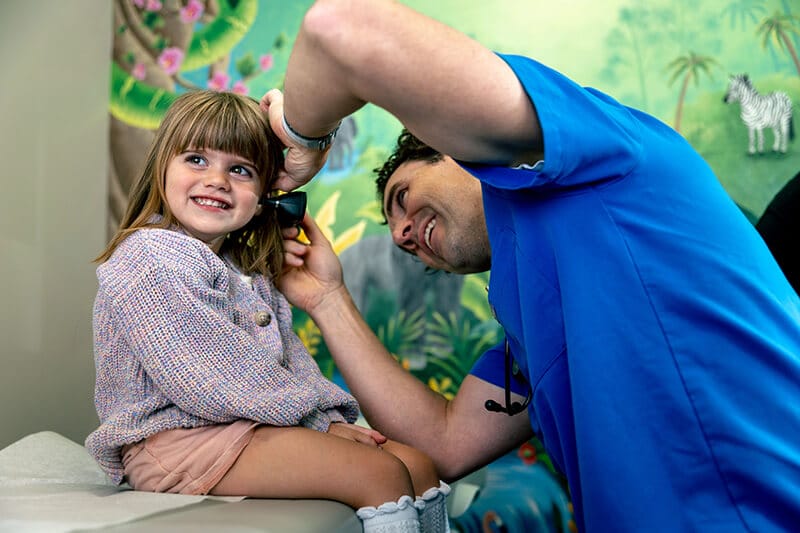A love of reading will give your child a passport to the world of real and make-believe stories and help them understand and enjoy everything written around them. Research has shown that child reading is tied to better physical and mental health outcomes later in life, and it’s an excellent way for you and your child to connect.
Reading together can introduce kids to new concepts and give them new ways of communicating with you and the rest of the world. By seeing characters experience common emotions and milestones, kids find new ways of navigating those experiences themselves. That’s one reason why knowing how story books are read to children can have such a positive impact on their development.
Ten Strategies For Making Storytime Even More Fun
A love of reading brings cognitive benefits, improves vocabulary, and makes it more likely your child will be comfortable deciphering unfamiliar words when they encounter them in print. If you’re wondering how to improve child reading skills, reading aloud to your kids when they’re young makes it easier for them to learn to read and fall in love with reading when they’re older. Falling in love with reading is the best foundation for a lifelong relationship with books. Try these ten tips and tricks for making storytime fun.
1. Set the Mood
Reading comes to life in our imaginations, but you can do little things to bring the stories to life.
- When reading out loud, pay special attention to your voice. How you read (raising and lowering your voice, tone, etc.) is as important as what you’re reading.
- Give characters voices and/or act out scenes together.
- Put out stuffies or toys to set the stage.
- Dress up in outfits or costumes.
- Read age-appropriate spooky stories in the dark by flashlight.
- Make themed treats.
- Listen to audiobooks together. You can even read along with a physical book at the same time while enjoying the performance of a professional narrator. This is a great example of how to enjoy reading as a shared experience.
2. Focus on Your Child’s Interests
A love of reading is more important than reading any particular book. You’ll have a better shot at getting your child excited about reading with characters or topics they love, even if that means reading the same thing over and over. From bugs to monsters and everything in between, there’s a children’s book about it. And there’s nothing wrong with reading comic books, graphic novels, joke books, etc. Reading is reading! This is one of the most effective ways when thinking about how to get kids excited about reading.
3. Choose a Designated Reading Space
Having a designated reading space helps establish a routine and signals to your child that it’s time to settle in and enjoy a good book. It can be as elaborate as a special reading nook or as simple as a cozy chair or favorite spot on the couch. Settling into the same space each time will help your child get into the mindset of reading. Creating a fun reading space can spark a child’s interest to reading book naturally and consistently.
4. Go to the Library Together
Your local library is a free resource for all things book-related. Let your child explore the shelves and pick out books on their own. You can read books together at the library without checking them out, and with a library card, you can borrow books and take them home.
Children’s books can be expensive, but with a library card, you can keep a fresh supply of books to read for kids at home without breaking the bank. In addition, many libraries host storytimes and other fun, age-appropriate events to help get your child excited about the world of reading.
5. Set Aside Reading Time
Experts recommend reading with your child every day, even if it’s only 10 minutes. Building reading time into your schedule will help reinforce the importance of reading and ensure that you and your child have some built-in quality time together without storytime falling by the wayside. Incorporating reading into your bedtime routine is a simple way to encourage reading and might also help send your child to dreamland smoothly. Making reading part of daily life supports child reading as a joyful habit.
6. Pick a Series
A series can get your child invested in characters they enjoy, with each new book feeding their love of reading. There are tons of popular children’s book series to choose from, including but not limited to Elephant & Piggie, Mo Willems’ Pigeon books, I Spy, the Magic School Bus, Pete the Cat, the Berenstain Bears, Captain Underpants, and Goosebumps. No matter the age of your child or children, there’s sure to be a book series they’ll love.
7. Pair Books with Movies
Kids love watching movies (who doesn’t?), and you can pair that with a love of reading. Read a book together before watching the film adaptation. If your child has a movie they already love, look for books involving the same characters. You might even find a direct novelization of their favorite movie.
8. Connect Stories With the Real World
Look for ways to bring your child’s favorite stories off the page and into the real world. If your child likes books about dinosaurs, take them to visit a museum. If they want stories about sea creatures or animals, take them to the aquarium or zoo. Get out in nature to see animals in the wild and make up stories together about what you see, or check out a book at the library that has a similar animal or adventure. Activities like this can support falling in love with reading by making books feel more real and engaging.
9. Narrate What You’re Doing
During storytime, explain what you’re doing as you read. Children will be drawn to the illustrations but you can help them understand the function of the text, even if they can’t read it yet. Point to the cover and explain that the title tells you the name of the story along with who wrote and drew it. Explain how the words work together with the pictures to tell the story. Explain how there are breaks between words and symbols, like periods and question marks. Point out speech bubbles or quotations and explain how those let you know when a character is speaking. Then, ask them to look for a specific letter or symbol and point it out as you read together.
10. Use Books to Answer Questions
Children are famous for asking a lot of questions, and who could blame them? There’s so much to learn! Rather than answering off the cuff or looking up an answer right then, try writing down questions and then learning the answers from a book. Take your list of questions to the library and use it to help you find books on that topic to help your child learn that books are valuable sources of information and entertainment. This approach supports a natural interest to reading book and builds lifelong learning habits.




